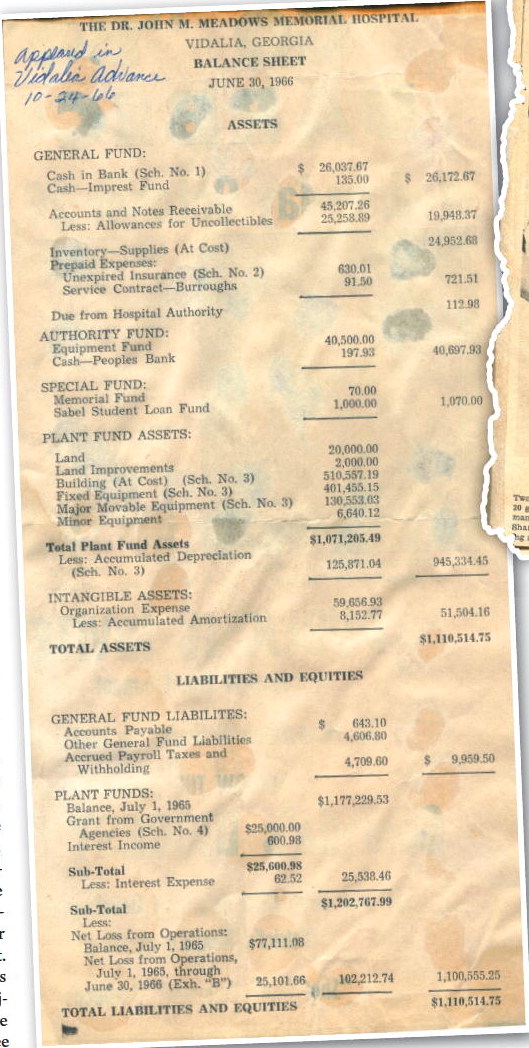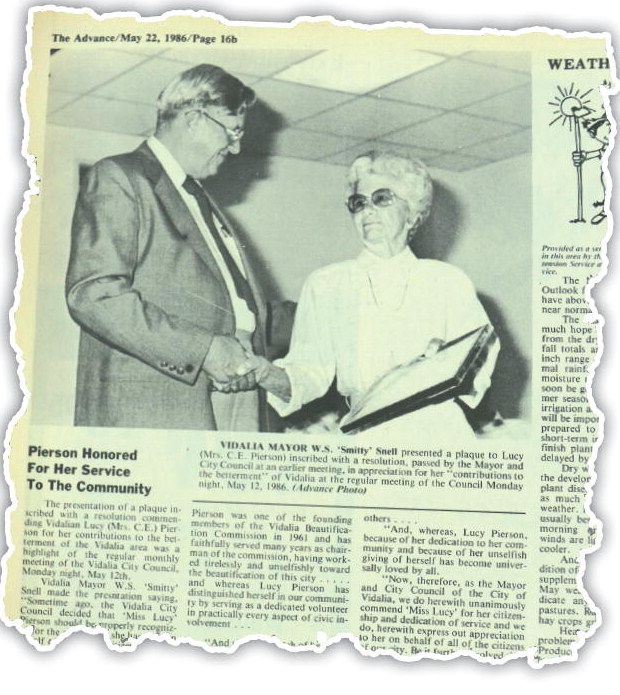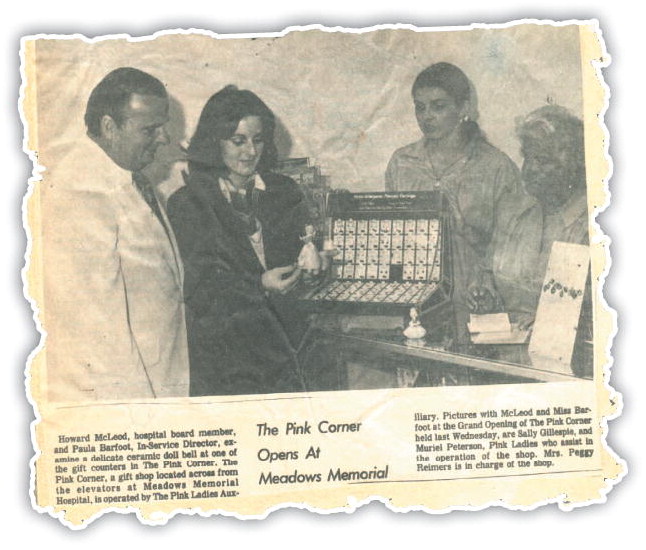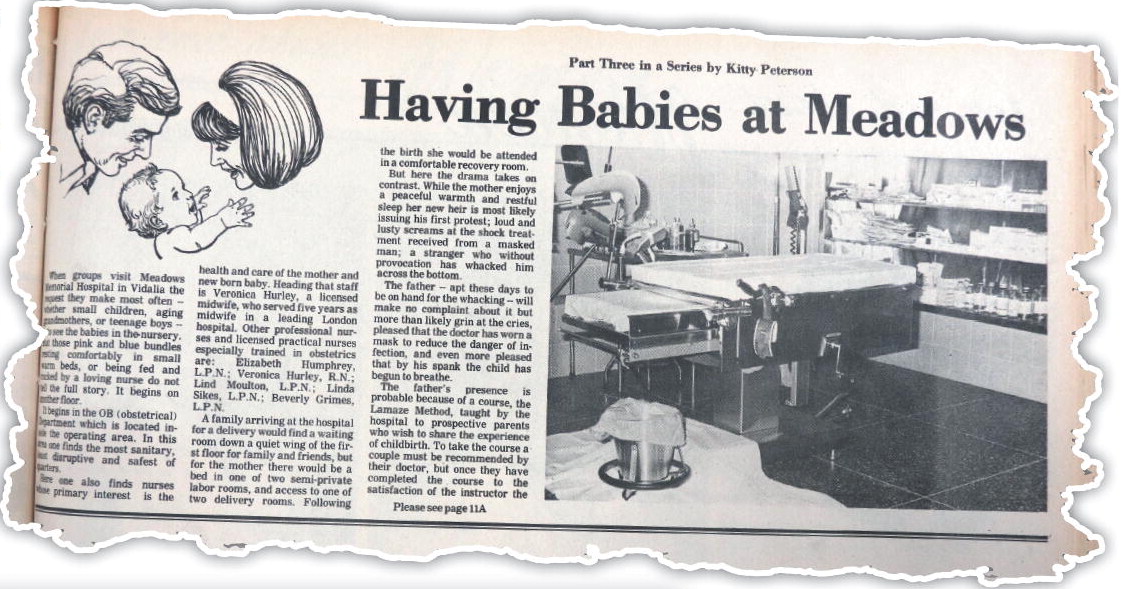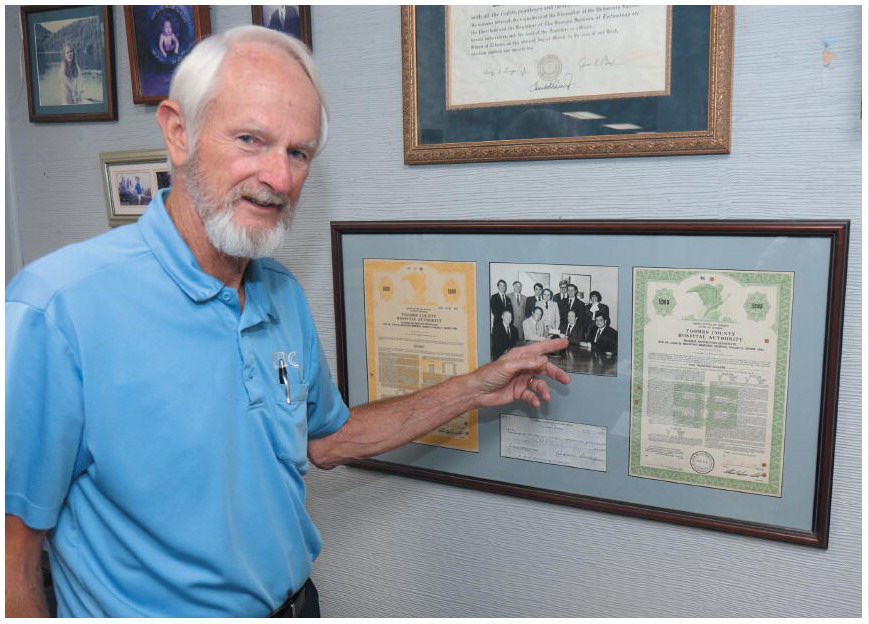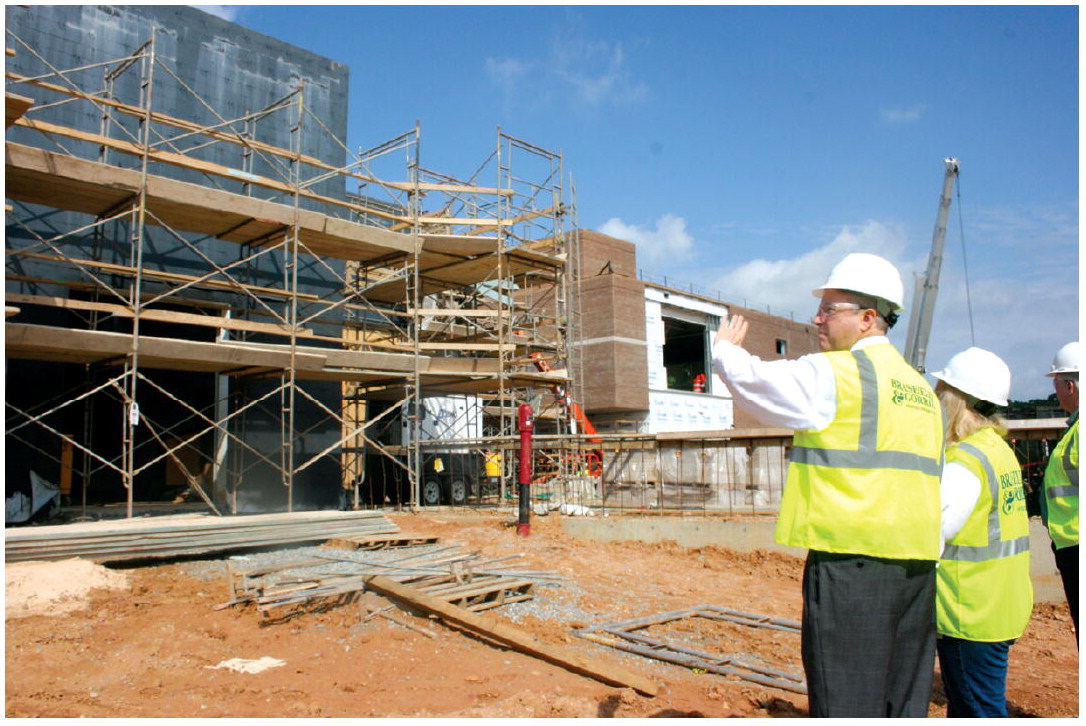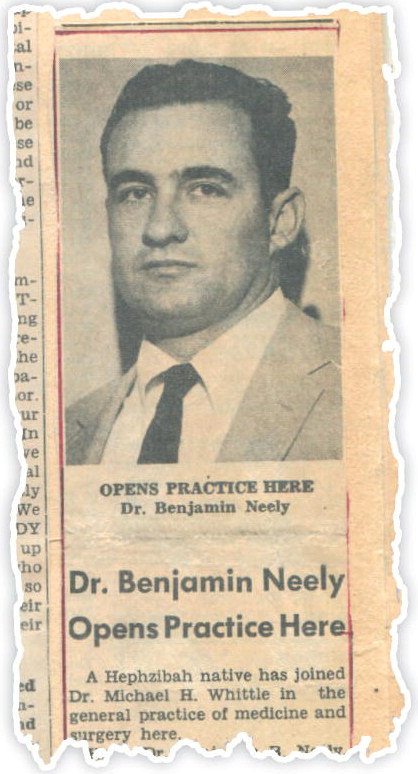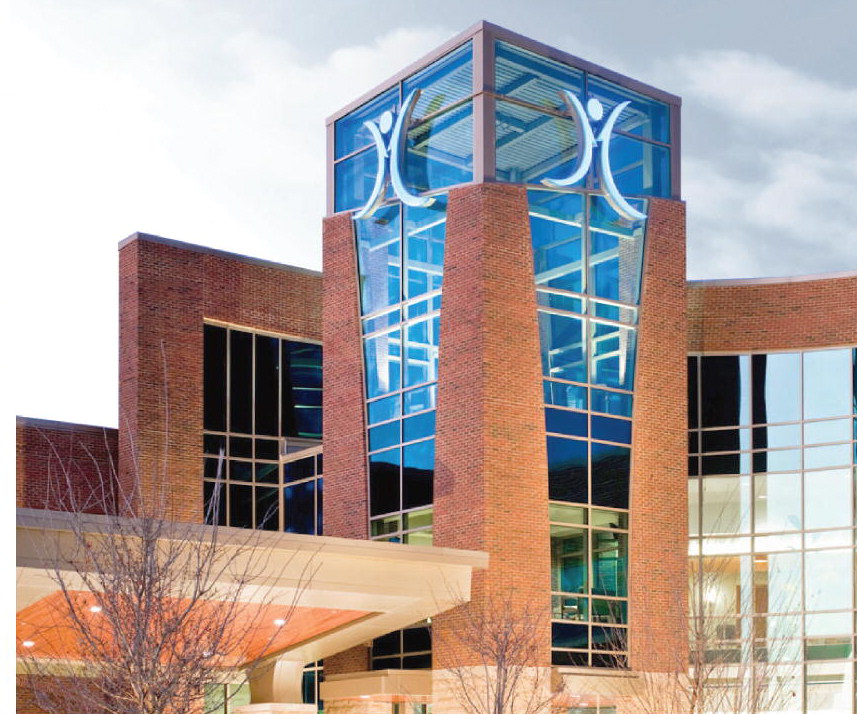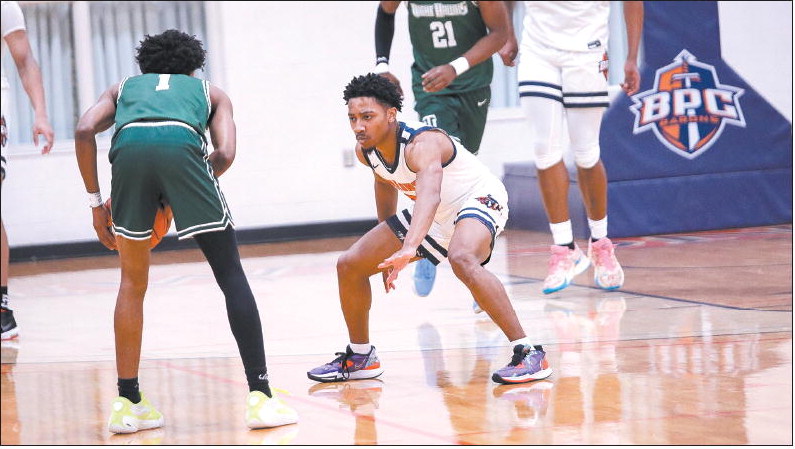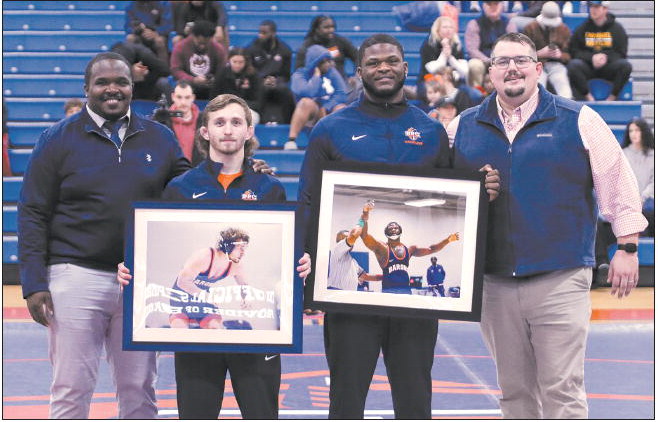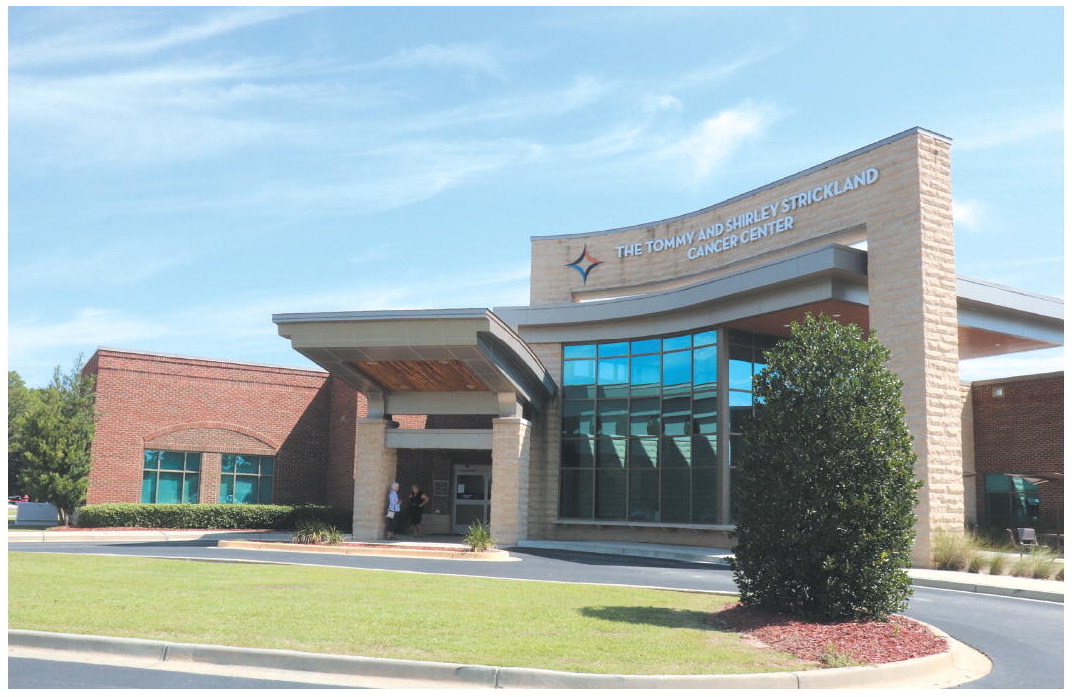continued from page Community leaders ….
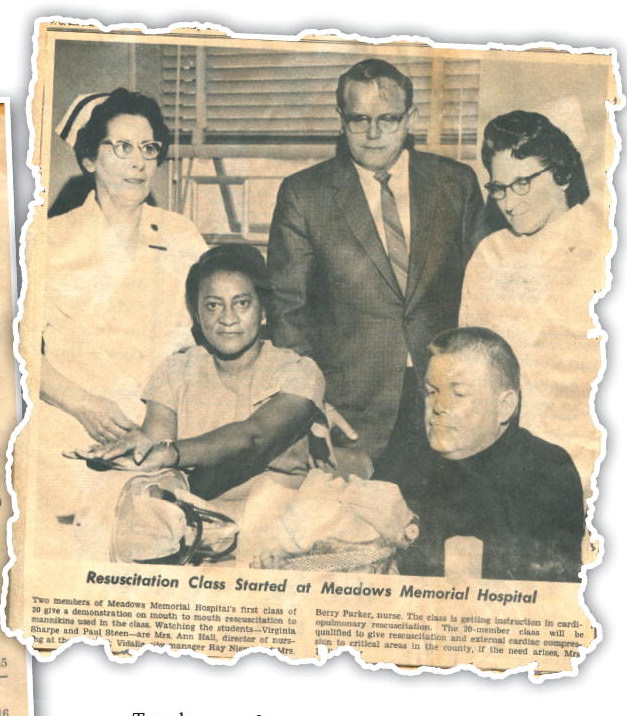

continued from page
Community leaders decided that it was in the best interest to consider taking advantage of these federal funds made available through the Hill-Burton Act. At that time a sole commissioner, Ross P.
Bowen, managed the county.
According to the regulations of the Hill-Burton Act, a Hospital Authority had to be in place to qualify for the funding. Therefore, the local Hospital Authority was formed with John C. Meadows as Chairman, W. Doyle NeSmith as Vice Chairman, Homer Vandiver as Secretary, and J.C.
Wilkes as Treasurer. The first meeting of the Hospital Authority was held on May 9, 1960. A Site Selection Committee was appointed and consisted of Jule Matheson, Hunter Morris, Paul Tippett, Ross Bowen, and Ed McNatt.
A Publicity Committee consisting of Homer S. Vandiver as Chairman, Jule Matheson as Vice Chairman, Sid Newton, and Paul Tippett was established to promote the idea of having a community hospital and garner support for the project.
All advertising expenses used to promote the project were paid out of the pockets of the committee members.
The Site Selection Committee of the Hospital Authority began looking for potential sites for the new hospital and the county held a referendum on the issue of having a Hill-Burton Hospital. Sid Newton of the newly appointed Committee, made a motion, and it was seconded by Doyle NeSmith, to request that the Georgia State Engineer at the time, James M. Sitton, evaluate the viability of several sites, including the Meadows site, the Vidalia Ballpark site, the Vidalia Airport site, the James Musgrove site, the Mose Coleman site and the Wilkes site located between highways 280 and 292, which later became the location of the new Hospital built in 2010. Drs. Gross, Mercer, Connor, Bedingfield, Aiken, Youmans, and Whittle pinned a letter to state officials indicating that they did not plan to support a Hill-Burton Hospital in Toombs
County. A proposal was made by the Hospital Authority to buy out the local physicianowned hospitals provide them financial relief for the revenues they would lose due to the opening of a community hospital.
The Letter
Th The location of the new hospital became a hot topic in the year 1960. There was plenty of politicking on each side as to where the new hospital should be located. Then along came a letter from a former Vidalia citizen who had gone to Texas to seek his fortune.
That Vidalia native, Algur Hurtle Meadows, built a billion dollar fortune when he and two friends founded the immensely successful General American Oil Company in Dallas, Texas. The partners bought leases on potential oil well sites that began gushing black gold and overnight became a huge financial success.
Upon his death, his fortune would fund a foundation for charitable purposes to be expended only in the state of Texas. However, because of his connections with Vidalia, a letter from Mr. A.H. Meadows to Hospital Authority Chairman John Meadows stated, “I see from the Vidalia paper that you have been appointed to the Hospital Board of Toombs County. I also see there is some controversy as to the location.”
Mr. Meadows further indicated that if Toombs county would approve a $150,000 bond issue, he would match $150,000 plus contribute 20 acres of land in his family’s newly developed subdivision known as Meadows Estates Subdivision.
At that time the piece of land consisted of a pecan orchard and a few houses in the center of Vidalia. Meadows further stipulated that the hospital would be named for his father, Dr. John M. Meadows, who was generally believed to be the first physician to practice in Toombs County. Therefore, the Hospital Authority agreed and original name of the hospital was The Dr. John M. Meadows Memorial Hospital.
The original funding would be secured through federal and state grants
C w H it lo o to fif t di n continued from page
under the Hill-Burton program. This eliminated some of the financial concerns surrounding the hospital project and persuaded various development authorities in the city and county to support the hospital. Then Mayor James F. Darby, Jr., gave his support to the project, “provided it would be self-supporting.”
In October of 1960, a special called meeting of the newly formed Toombs County Hospital Authority Committee, chaired by John Meadows and including Hunter Morris, J.C. Wilkes, Paul Tippett, Jule Matheson, Doyle Ne-Smith, and Homer S. Vandiver and two members of the physician advisory group, Dr. Robert W. Oliver and Dr. Frank Robbins, unanimously voted to accept the offer presented by Mr. A.G. Meadows provided the county supported the idea, which it did.
Another motion was made by Homer S. Vandiver and seconded by Jule Matheson to offer financial relief to the physicians who owned smaller clinics so that they could afford to close the hospital portions of their clinics. This proposal compensated the physicians for loses they would have incurred with the opening of the new hospital and solidified the support of the doctors for the new hospital.
Open For Business
After two years of construction the Dr. John M. Meadows Memorial Hospital located at 1703 Meadows Lane in the heart of Meadows Estates proudly opened its doors on September 18, 1962, at a cost of approximately $1 million. The new facility boasted 51 beds, and 65 original paid staff members and 6 physicians made up the medical staff. Two thirds of the cost of the project was funded by state and federal money, and a general obligation bond that was fully paid by the hospital over the next 20 years covered one third of the
cost. The original physician staff included three doctors that had opposed the new hospital: Drs. H.I. Conner, M.W. Whittle and W.H. Bedingfield. Drs. R.H. DeJarnette, Sr., J.E. Barfield and G.W. Merritt were the other members of the original physician staff which soon grew to include Drs. O.S. Gross, B.E Daniels, John McArthur, and W.W. Aiken.
The first five Meadows Hospital Administrators during the years 1962 to 1975 were Elmer Clark, John Waters, Mayor Frank Jenkins, and Roy Stewart, each averaging 2 years of service as CEO.
Smiley Weatherford came on board as CEO in 1975 and served 2 years. He was succeeded by 11 more CEO’s: David Hall, Lee Marche, Kenneth Lowery, Larry Parks, Tony Zurbrugg, Brian Bogert, Wes Bergman, Ronald Williams, Barry Michael, and Alan Kent. Wes Bergman served as Administrator for eight years and Alan Kent served the longest term as Hospital CEO for 21 years. Kent resigned in 2021 when HCA purchased the hospital, and Matt Hasbrouke is the eleventh to take the reigns as Meadows top officer.
In May of 1963, the hospital received approval for approximately $86,000 to secure equipment to open the hospital. The first electric bed was approved at a cost not to exceed $100.
Original room rates in 1963 were $19 per day with a bath. A semi-private room including bath was $15 per day. Semi-private rooms without a bath were $14. The original emergency room fee was $3 per patient plus the cost of medications.
By 1965 the total declared assets after depreciation of The Dr. John M. Meadows Hospital were listed at $1.12 Million.
A Financial Misconception Dispelled The Hill-Burton Act provided the original grant of a low interest loan to get the hospital started. Toombs County backed the first three main expansion projects by guaranteeing the bonds. Through the years it has been widely misconceived that Toombs County and The Cities of Vidalia and Lyons funded Meadows Hospital. That is not true, Meadows has never been given any financial assistance from either of these governmental entities, and from day one Meadows Hospital has earned its own way and has been financially self-sufficient financially from the beginning, unlike many of the 142 surviving hospitals in the state of Georgia.
Volunteers
In 1968 the Ladies Auxiliary volunteer organization was formed, which would became known as the Pink Ladies. This was
4A continued from page
a group of women volunteers dressed in pink who welcomed visitors to the hospital, delivered flowers and gifts to patient rooms, offered kind words to the sick and disabled, and assisted family members. They became an integral part of Meadows Hospital daily life. The Pink Ladies, now known as Auxiliary Volunteers, with their warm smiles and giving hearts, selflessly donate their time every day to make patients feel better and visitors feel welcome. The Pink Corner gift shop in the hospital lobby raised many y y thousands of dollars to support worthwhile causes at the hospital. When the new obstetric wing was opened in 1983, the Pink Ladies donated $75,000 dollars to purchase needed equipment for mothers and newborns.
A wonderful lady named Lucy Pierson donated over 55,000 hours of her life as a Pink Lady to make Meadows Memorial Hospital a better place. Through the years, numerous volunteers have followed in Ms. Lucy’s footsteps and given many thousands of hours to serve their hospital and community through the Pink Ladies and Auxiliary Volunteers program at Meadows Hospital. To give thanks to her, the Lucy Pierson Medical Office Building on Maple Drive was named in her honor On August 28, 1997.
The 70’s and 80’s
The year 1976 marked the beginning of significant growth for Meadows Hospital as numerous expansion projects were undertaken through the 70’s and into the 80’s. The addition of the third floor in 1976 included eight intensive care beds bringing the total number of beds to 91. By 1978 the number of paid staff members had increased to 224.
By 1978 the medical staff had increased from 6 to 17 physicians providing a diverse number of specialties, and in 2000 the hospital had an active medical staff of 35.
In 1979 the Toombs County Commission established a countywide ambulance service, to be based at and managed by the hospital. The Hospital Authority agreed to the idea with the stipulation that the Commission would cover any financial losses the service might incur, which they did. To house the newly established ambulance service, the hospital built a facility on Maple Drive behind the hospital. This building was used for about forty years until the service was relocated into the larger multipurpose building it now occupies. Understanding the need for mental health care in the community, the hospital authority constructed another facility in 1979 on Maple Drive and leased it to Pineland Mental Health. Pineland occupied this facility for 20 years until their facility was moved to Second Street in downtown Vidalia. The building now houses Meadows Sleep Center.
By 1982, the medical staff had grown and the hospital was experiencing high demand for its services. Occupancy rates were high, and at times all 91 beds were filled. More beds were needed, mostly for obstetric and surgical patients. The hospital applied for and received a Certificate of Need from the State of Georgia to build and equip a new wing with 34 beds and expanded support services to include pharmacy, radiology, laboratory, emergency, operating room, medical records, and a dietary department.
Cost of the project was about $4.75 million dollars and was completed in 1983. It was financed by revenue bonds issued by the Toombs County Hospital Authority, and the bonds were all paid in full and redeemed before maturity.
Meadows in the
In 1991 the hospital and physicians recognized that there was a need for cardiac catheterization procedures to be performed here to improve the health care for this area’s citizens. The hospital purchased a mobile unit that provided this service until 1993.
Ray Tapley, columnist for The Advance newspaper in the 1990’s, declared that Meadows Regional Medical Center is the nearest thing Vidalia has to an economic engine, and that Meadows is by far the most comprehensive medical facility in at least 10 surrounding counties. “No longer is it necessary for area residents to travel to Savannah, Augusta, Macon, Atlanta, or Jacksonville for specialized treatment for major medical procedures, which is in stark contrast to what was available in Vidalia’s and Toombs County’s first few M d h hos-
pitals.” To keep up with the constantly advancing technology in the medical industry, in October 1992, the hospital contracted with a company to provide a mobile MRI unit, giving the hospital access to an important diagnostic tool, magnetic resonance imaging, (MRI). The following year, Regional Diagnostics, which was the local imaging center at the time, was purchased by the hospital to bring the radiology department back into the confines of the hospital.
Meadows Hospital underwent a significant Corporate Reorganization in 1994. Under the leadership of businessman and governing board member, Mike Holland, the reorganization provided the Hospital Authority the ability to include a Holding Board, known as Meadows Healthcare
90’s
“No longer is it necessary for area residents to travel to Savannah, Augusta, Macon, Atlanta, or Jacksonville for specialized treatment for major medical procedures, which is in stark contrast to what was available in Vidalia’s and Toombs County’s first few hospitals." – Ray Tapley continued from page
f Alliance, Inc. and an operating board, Meadows Regional Medical Center, Inc. These boards allowed the hospital to move in a more regional direction by expanding its services outside of Toombs County. At this time the board unanimously voted to change the name of the hospital from the Dr. John M. Meadows Hospital to Meadows Regional Medical Center. And the name remained MRMC until HCA (Hospital Corporation of America) purchased the facility in 2021. After the purchase, MRMC was renamed MHMH (Memorial Health Meadows Hospital).
The hospital’s growth continued in 1994 with the addition of a mobile lithotripsy unit. Lithotripsy is a procedure using ultrasound shock waves to disintegrate kidney stones in a painless manner so that they can be passed through the body. The first procedure performed in this unit was in February by Dr. P.R. Kalathoor and Dr. Gilbert Gonzalez.
Also that year the R.T. Stanley, Sr., Health Center was opened in the city limits of Lyons, and due to its overwhelming success and huge patient load, the center had to be expanded several times over the years. An additional ambulance station was opened in Cedar Crossing on March 6, 1994.
Meadows received accreditation from The Joint Commission on Accreditation of Hospitals on November 14, 1996. This is a much sought after award that according to the Joint Commission, “verifies that a healthcare provider meets the most rigorous quality and safety standards of care for their patients and communities.”
On August 28, 1997, the Lucy Pierson Medical Office Building opened its doors on the hospital campus and provided office space for eight physicians.
In 1988, an ambulatory surgical center was added to the hospital and that same year the first patient was admitted to the new third floor ICU unit. In 1999 the number of paid employees had grown to 440.
In the late 90’s the federal government initiated an extremely complicated and restrictive payment system for Medicare and Medicaid patients, and hospital admissions throughout the nation were severely reduced, creating a financial nightmare for hospitals like Meadows. As a result Meadows’ third floor had to be closed. The Governing Board and Administration hit panic mode. Fortunately, Mike Holland, as Governing Board Chairman, found a solution. Meadows’ third floor was converted into an acute care nursing home and became an immediate
A WORK IN PROGRESS – MRMC’s CEO Alan Kent explains how construction on the new hospital is progressing to Kathy Bradford, Associate Editor of The Advance.
Photo by Aspen Smith continued from page
success with 100% occupancy.
As of 1999 the Meadows Emergency Room was staffed by local doctors, but as the patient load grew, it became impossible for those doctors to effectively man the ER and their own practices. So the administration contracted with Georgia Emergency Services on March 1, 1999, to provide two physicians, 24 hours a day, 365 days a year to oversee duties for the ER. In that same year an additional expansion of 20,000 square feet added state of the art operating suites, endoscopy suites, and cystoscopy suites.
Meadows in the New Millennium
On September 4, 2001, the first positron emission tomography, (PET), scan was performed on the hospital’s newly acquired mobile PET scanning unit. PET scans detect early signs of cancer, heart disease and brain conditions. That same year a Cardiac Catheterization Lab was opened, and its first procedure was performed on November 7.
Meadows received two prestigious awards in 2002 – The Georgia Alliance of Community Hospitals Hospital of the Year Award presented annually to the community hospital that best exemplifies outstanding community service outreach and successful operation results, and the JCAHO Accreditation, which it had been awarded in previous years.
In March of 2003 the hospital purchased a multi-slice computed tomography, (CT) scanner. The hospital also purchased a building owned by Tumi located at the corner of hwy 280 and Harris Industrial Drive to be used as a Wellness Center. That facility includes a pool, training and fitness equipment and additional medical office space for physicians employed by the hospital. The first Sleep Study Center was built on April 4, 2003.
That same year marked the 40th anniversary of the opening of the Dr. John M. Meadows Hospital.
Meadows Regional leadership and board began discussions regarding the need for new hospital facilities as early as the late 1990s. Considering that the older facility built in 1963, with the assistance of the Hill-Burton Act, had begun to show significant signs of stress and need for major renovations, the leadership worked to determine what direction should be taken to accomplish the best outcome in order to meet the future healthcare needs for the community.
Feasibility studies determined that because of the massive amount of investment that would be necessary to repair, renovate and upgrade the technology in the existing older hospital, a new facility would be a more feasible investment for the long term.
Design of the facility began in 2007 by the architectural firm Earl Swensson and Associates based in Nashville, Tennessee and the process took almost 27 months to complete before construction began.
Plans to build a new hospital were revealed in April of 2008 by Meadows’ Chief Executive Officer Alan Kent. Thirty- six acres of land located between Hwy 280 and Hwy 292 across from the Meadows Wellness Center was purchased from Gaston Wilkes for $2,750,000.00 as the site for the new hospital.
Total cost of the new buildings was estimated to be $75 million dollars. Kent said the new facility would be built without costing taxpayers of the city of Vidalia or the county of Toombs any tax revenue.
In May of 2009 MRMC got final approval for a U.S. Department of Housing and Urban Development insured loan to construct the new hospital facility.
Terry Thompson, then Vice President of Operation at MRMC, was assigned the daunting task of working with architects, construction companies, contractors, consultants, engineers and financial people to insure the massive project was successful. The construction phase of the project was awarded to Brasfield and Gorrie, based in Birmingham, Alabama, a national contractor that used a large network of subcontractors, including local infrastructure firm McLendon Enterprises, to accomplish the massive project.
On time and below budget, under Thompson’s direction the building was completed in 17.5 months, eclipsing the projected construction time of 2 years and the cost fell under budget at $57 million versus the actual projected cost of $60 million.
When the new MRMC hospital opened its doors on February 4, 2011, the facility boasted 194,000 square feet with 57 inpatient rooms equipped with some of the most advanced technology at the time, 6 operating rooms and the new ER included advanced trauma rooms similar in design to the operating rooms, which provided ample space and efficiency for the staff to provide the best care in emergency and trauma situations.
The radiology depart-
